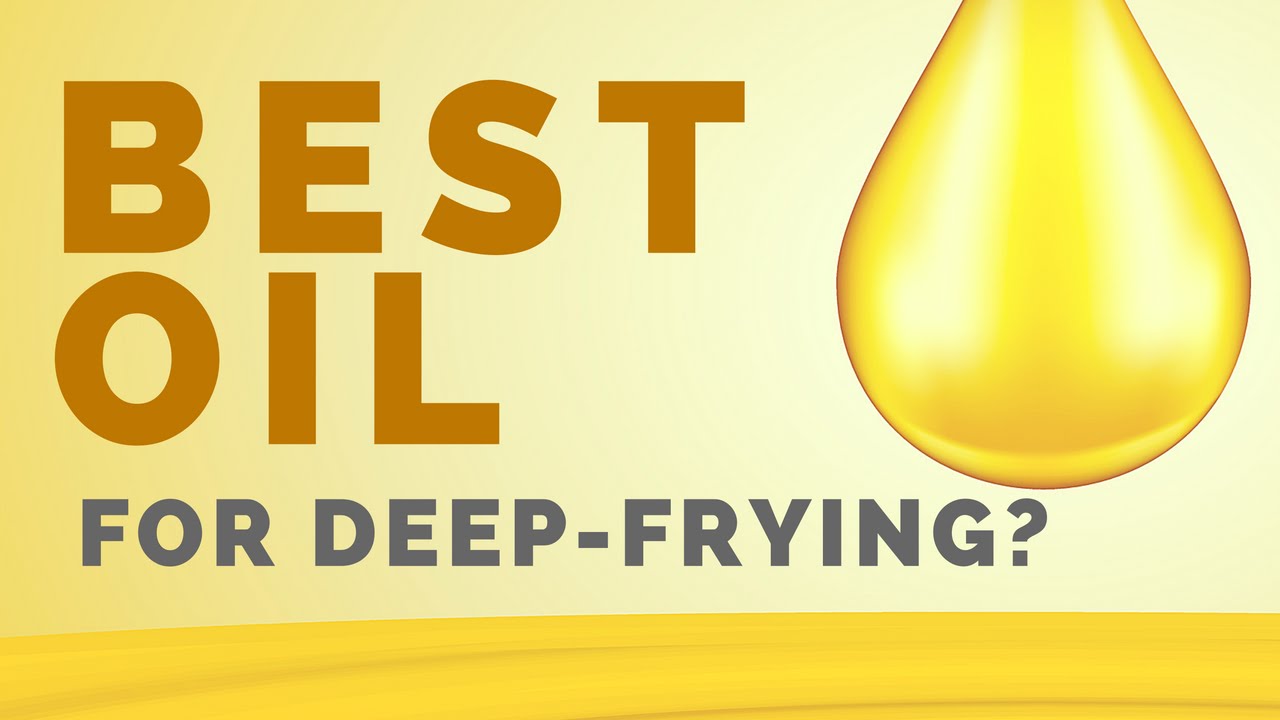What Is The Best Oil For Deep-Frying?

What Is The Best Oil For Deep-Frying?
The best oils to use for frying and deep-frying.
Click here to subscribe to our channel (takes 2 seconds): https://www.youtube.com/user/AuthorityNutrition?sub_confirmation=1
Some oils can withstand much higher temperatures than others. This is actually a key factor for choosing the best oil.
Choose oils that are stable and don’t react with oxygen when heated. They should have a smoke point of greater than 450°F or 230°C. That is, the point at which is start to burn and smoke.
Oils that are mostly saturated and monounsaturated fats tend to be the most stable, while oils high in polyunsaturated fats tend to be more fragile. This is because polyunsaturated fats contain two (or more) double bonds in their chemical structure, which react to high high heat.
And then taste obviously matters as well. Oils that have a “neutral” flavor are generally preferred when deep frying.
So which is best then? Well there’s several good choices really, the first is coconut oil, which is about 90% saturated fat.
Research has shown that even after 8 hours of continuous deep frying at 365°F (180°C), the quality of coconut oil does not deteriorate.
Note that refined oils tend to have a higher smoke point and more neutral taste than unrefined versions, so although unrefined coconut oil performs quite well, the best choice with regards to safety and quality when deep frying is actually refined.
Olive oil is another that does very well under deep-frying conditions, this time because of its high monounsaturated fat content.
Studies show it can be heated or used in a deep fryer for over 24 hours before it starts oxidizing.
Again, refined olive oil has a higher smoke point and more neutral taste than unrefined varieties like extra virgin. So extra virgin is fine for baking and regular frying, but with deep frying refined is the better choice.
Animal fats are also great choices for deep frying, particularly ghee and beef tallow. Some say they add a unique crispiness when deep fried, just don’t use butter at high temperatures because it contains trace amounts of carbs and protein that burn.
Avocado oil is also great, and has a similar fatty acid composition to olive oil. It has an extremely high smoke point upwards of 500°F or 260°C. However it does have a bit of a stronger taste, and typically is more expensive.
Lastly I need to clarify that deep fried foods should not be common place in our diet. Because compared to other cooking methods, like baking or grilling, it adds a lot of calories to your food.
For example a roasted chicken wing contains approximately 100 calories, whereas a deep-fried chicken wing contains 160 calories. That’s 60% extra calories eating the same thing.
So by all means enjoy the occasional deep-fried treat, but don’t go overboard.
Studies mentioned in video:
Study 1: http://www.ncbi.nlm.nih.gov/pubmed/25694709
Study 2: http://www.ncbi.nlm.nih.gov/pubmed/20678538
Study 3: http://www.ncbi.nlm.nih.gov/pubmed/17935291



![[ID: Hx_A0iLhdr8] Youtube Automatic](https://bizimtube.com/wp-content/uploads/2021/03/id-hxa0ilhdr8-youtube-automatic-236x133.jpg)
![[ID: lp7w0UmpuIs] Youtube Automatic](https://bizimtube.com/wp-content/uploads/2021/03/id-lp7w0umpuis-youtube-automatic-236x133.jpg)
![[ID: s2-7T1TH-lY] Youtube Automatic](https://bizimtube.com/wp-content/uploads/2021/03/id-s2-7t1th-ly-youtube-automatic-236x133.jpg)
![[ID: b_lakC9M4UQ] Youtube Automatic](https://bizimtube.com/wp-content/uploads/2021/03/id-blakc9m4uq-youtube-automatic-236x133.jpg)
![[ID: r44yl6nPONs] Youtube Automatic](https://bizimtube.com/wp-content/uploads/2021/03/id-r44yl6npons-youtube-automatic-236x133.jpg)
![[ID: pAwto1YQjA8] Youtube Automatic](https://bizimtube.com/wp-content/uploads/2021/03/id-pawto1yqja8-youtube-automatic-236x133.jpg)
![[ID: XETG8azHiv4] Youtube Automatic](https://bizimtube.com/wp-content/uploads/2021/03/id-xetg8azhiv4-youtube-automatic-236x133.jpg)
![[ID: f3G_-S_2HUk] Youtube Automatic](https://bizimtube.com/wp-content/uploads/2021/03/id-f3g-s2huk-youtube-automatic-236x133.jpg)
![[ID: G8oWns54snA] Youtube Automatic](https://bizimtube.com/wp-content/uploads/2021/03/id-g8owns54sna-youtube-automatic-236x133.jpg)
![[ID: s0lIFXhu6aw] Youtube Automatic](https://bizimtube.com/wp-content/uploads/2021/03/id-s0lifxhu6aw-youtube-automatic-236x133.jpg)
![[ID: 4UTd2Ev8eYg] Youtube Automatic](https://bizimtube.com/wp-content/uploads/2021/03/id-4utd2ev8eyg-youtube-automatic-236x133.jpg)
![[ID: RKBGBjVJBxQ] Youtube Automatic](https://bizimtube.com/wp-content/uploads/2021/03/id-rkbgbjvjbxq-youtube-automatic-236x133.jpg)